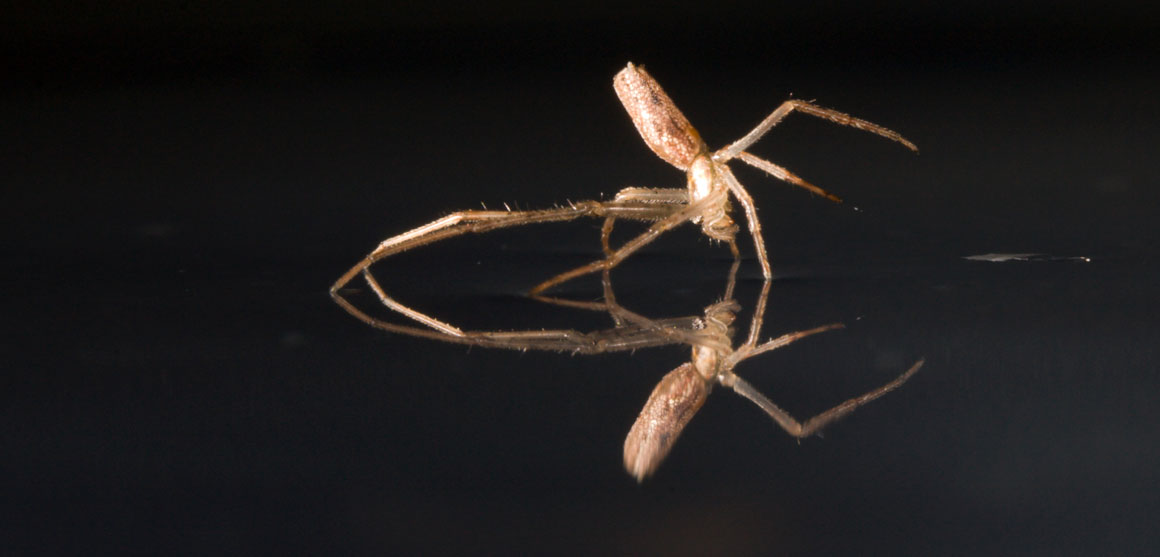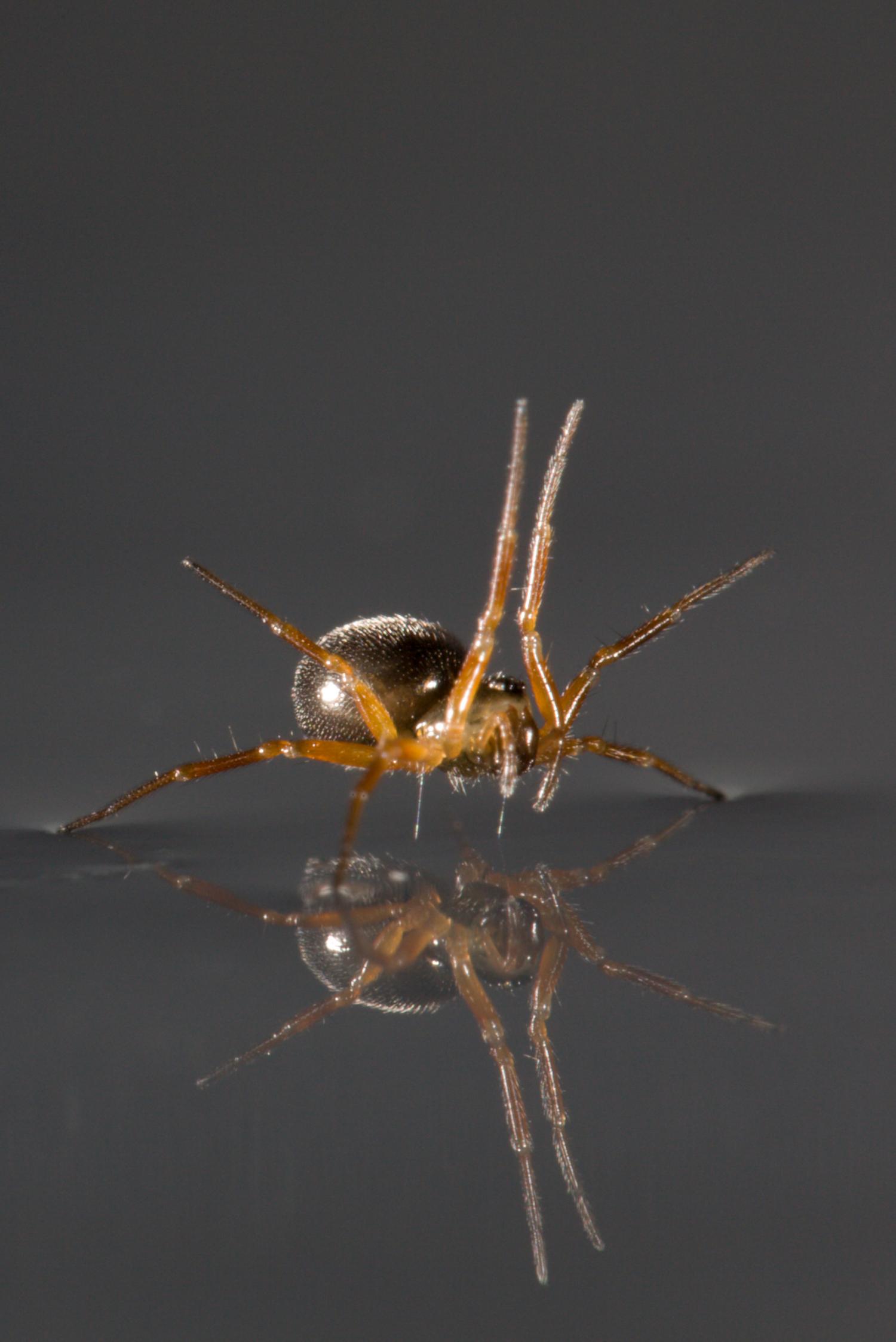Terrible puns aside, a recent study finds that spiders can not only fly, but also navigate the waters by using their legs as sails and silk as anchors.
For Homo sapiens, sailing was a technological milestone that required the development of masts, sails, riggings, and more. For spiders, however, all it takes is a few legs and a length of silk. Recent findings show that spiders can actually harness the power of the wind to "sail" across great distances: a behavior that may be important for migration.
 |
So why doesn't a spider simply sink when you drop it onto water? The key is in its legs. Like oil, spider legs repel water, allowing the arachnid to skate across the surface without even creating turbulence. In order to capture the wind, the spider either raises its legs or, in a bizarre headstand, it lifts its abdomen as sail (see photo above). You might think that "sailing" puts the spider at the mercy of the whim but, naturally, spiders have also developed a steering system. By releasing lengths of silk into the water, the arachnid can create drag which reduces its speed or even brings it to a halt. Spiders also have enough sense to snag floating objects with their thread and reel themselves toward the makeshift raft.
 |
What's most surprising about this behavior is that, while some spiders, like Dolomedes, are known to walk on water, all of the 21 "sailing" species are terrestrial. Scientists hypothesize that sailing might actually be a life-preserving behavior by spiders who are forced to land on water after a long flight.
That's right, spiders also fly.
In a technique called "ballooning," a spider will climb to the top of a tree or building, raise itself as if on tiptoes, and release a triangular balloon of gossamer threads. On a windy day, the spider can travel up to 30 km and cover approximately one and a half lengths of Manhattan. This adaptation allows young spiders to find a habitat far from its hundreds of brothers and sisters, thus lessening the competition for food. Silk is perfectly adapted for ballooning (in fact, the first hot air balloons were made of silk) because of its weight and relative strength, but also because it responds to static charge. On a windless day, spiders can still fly because the Earth's static electric charge will carry them for as long as they remain airborne.
Check out this video of a mass migration of young spiders via ballooning. Now that's one trick you'll never witness Spider Man performing.
Sources:
Morito Hayashi, Mohammed Bakkali, Alexander Hyde & Sara L. Goodacre. Sail or Sink: Novel behavioural adaptations on water in aerially dispersing species. BMC Evolutionary Biology 2015.
Biomed Central. Seafaring spiders depend on their 'sails' and 'anchors'. Press Release.








Facebook comments